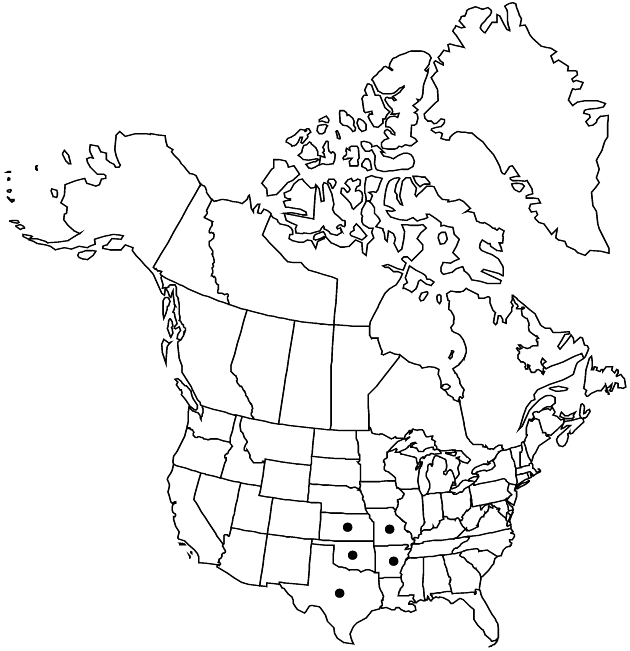Astranthium ciliatum
Sida 21: 2016. 2005.
Annuals, usually narrowly taprooted. Stems usually 1, erect to decumbent-ascending. Leaves: basal and proximal cauline 15–40 (–50) × 3–11 (–14) mm. Involucres (2–) 2.5–4.5 mm. Ray-florets (7–) 13–24; corolla laminae white, occasionally drying with bluish midstripe abaxially, (4–) 6–10 (–12) mm. Disc-floret corollas 2–3 mm. Cypselae 1–1.6 × 0.6–0.8 mm, faces minutely longitudinally striate, otherwise nearly smooth, rarely papillate-pebbly, uniformly sparsely to densely glochidiate-hairy. 2n = 8.
Phenology: Flowering Mar–May.
Habitat: Open sandy sites, less commonly in loam or clay, oak and oak-hickory woodlands, roadsides, pastures, grassland, also occasionally (Ark., Okla.) on rocky ridges, limestone outcrops, gravelly stream bottoms
Elevation: 10–100 m
Distribution

Ark., Kans., Mo., Okla., Tex., Mexico (Nuevo León), Mexico (Tamaulipas)
Discussion
Selected References
None.
Lower Taxa
"narrower" is not a number."[" is not declared as a valid unit of measurement for this property."]" is not declared as a valid unit of measurement for this property.
